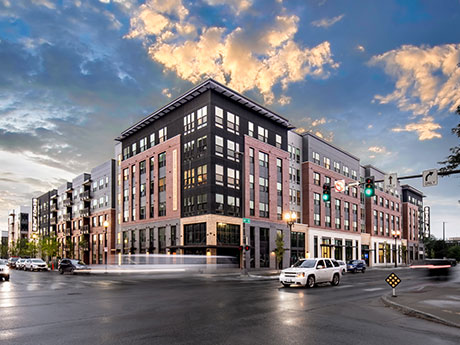By Tom D’Arcy and Brad Soderwall, Hines
The Omaha market has experienced strong growth in recent years, with $8 billion in commercial real estate development currently underway driven by consistent migration of new residents and professionals to the area.
The city’s attractiveness is attributed in large part to its high quality of life and attractive cost of living, both of which present compelling opportunities for new development that further incentivizes in-migration, and cultivates and enhances the unique lifestyle that makes Omaha a desirable place for families and young professionals to put down roots.

Shifting demographics drive growth in Omaha
Omaha’s low unemployment rate (at 2.6 percent as of July 2024, per the Nebraska Department of Labor), quality of life, affordable cost of living and expanding cultural opportunities are driving migration into the area. The Omaha-Council Bluffs metropolitan area saw its strongest population growth since pre-pandemic (2019) in 2023, with an increase of 0.8 percent, substantially outpacing the national average of 0.5 percent, per the U.S. Census Bureau. 2023 also saw a net migration of over 3,400 residents to the area.
This population growth is fueling demand in the multifamily market, where we saw a record-setting year for development in 2023 with the city registering nearly 3,000 units of new supply, per CoStar. Across Hines’ multifamily portfolio, we estimate that 30 to 40 percent of applicants are coming from out of state, attracted by the strong job market across various industries — particularly healthcare — and many of these new residents are educated Gen Z and millennials in their 20s to 40s. We’re also seeing more graduates from surrounding colleges choosing to remain in the Omaha area, as well as many who had left the city and are returning to benefit from its economic and cultural growth.

This has spurred demand for more quality housing, restaurants, arts and entertainment venues, and has also supported the city’s downtown office market. For example, leading insurance firm Mutual of Omaha is building an 800,000-square-foot skyscraper that will house the company’s headquarters, comprising office, meeting and amenity spaces. An influx of new parks and landscaping, retail stores and high walkability scores make downtown Omaha attractive for both residents and employers.
Additionally, Hines and leading design firm Perkins & Will were recently named the development and design consultants on Alliance Sports’ 18-acre mixed-use development that will house a 7,000-seat soccer stadium for Union Omaha, along with residential and retail spaces designed to enhance the vibrant and dynamic community in the downtown area. Sports-centered developments of this nature have been shown to spark strong growth in other markets, and we expect this project will have a similar impact on downtown Omaha.
Strong demand for quality, amenitized living spaces
As the population continues to grow, we’re seeing a growing need for new housing options that create high-quality, well-amenitized, curated living experiences across the city — particularly in high-demand neighborhoods such as Elkhorn and Papillion-La Vista, as well as downtown, where Hines’ Brickline at The Mercantile is situated.
MMG Real Estate Advisors has also noted an uptick in leasing activity in Northwest Omaha, along with significant new construction activity concentrated across seven desirable submarkets, including Midtown, Elkhorn, Papillion-La Vista, downtown, Northwest, central and Bellevue. Residents are increasingly looking for high-end finishes and appliances, wellness spaces and areas that allow for play and social engagement, and much of the new product coming to market aims to address these needs.
Along with traditional residential spaces serving working-age residents, Omaha’s senior living communities are aging and outdated; few, if any, meet the modern needs of seniors. According to the Census, 10 percent of the Omaha population is currently over the age of 70, with another 21 percent of residents comprising the 50 to 69 cohort.
It stands to reason that the city can expect to see increasing strain on its senior living facilities as baby boomers continue to age, and the time is now to begin revitalizing and adding to seniors’ housing stock to ensure these age groups have access to the high-quality living experiences and hospitality services they expect.
Public policy supports growth and development
Local officials in Omaha have been highly cooperative and continue to encourage development throughout the city, recognizing the substantial benefit this activity poses for Omaha’s long-term growth. As with the Alliance Sports stadium and adjacent development, thoughtfully planned spaces that address community needs are expected to propel the city forward. In 2023 alone, the Omaha City Council approved $129 million in tax-increment financing for 23 development projects that are estimated to generate $1 billion in mixed-use, housing and industrial investment across the city.
The optimism of public and private stakeholders in the Omaha market remains strong, and the area’s budding cultural scene, low crime rate, strong job market and affordable cost of living make the Omaha MSA an attractive region that will yield long-term value for strategic investors and numerous benefits for residents new and old.
Tom D’Arcy is a senior managing director and Brad Soderwall is a managing director with Hines. This article originally appeared in the October 2024 issue of Heartland Real Estate Business magazine.


